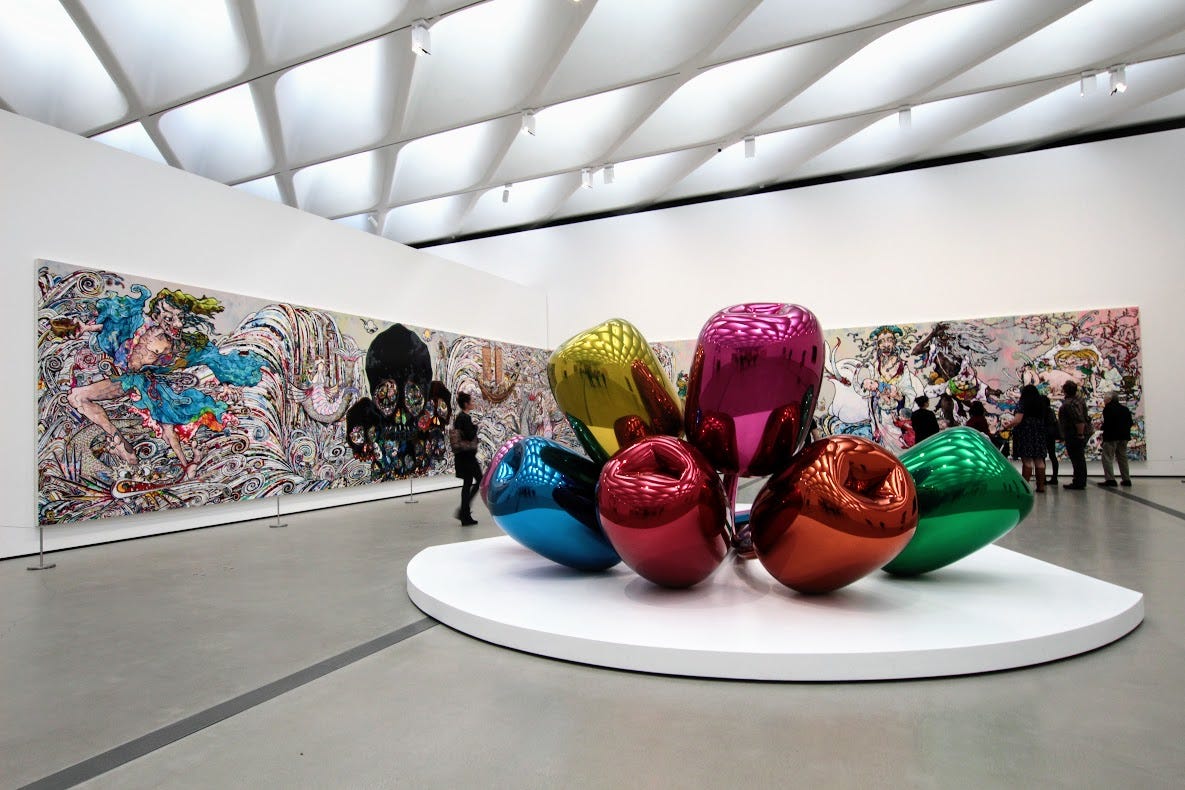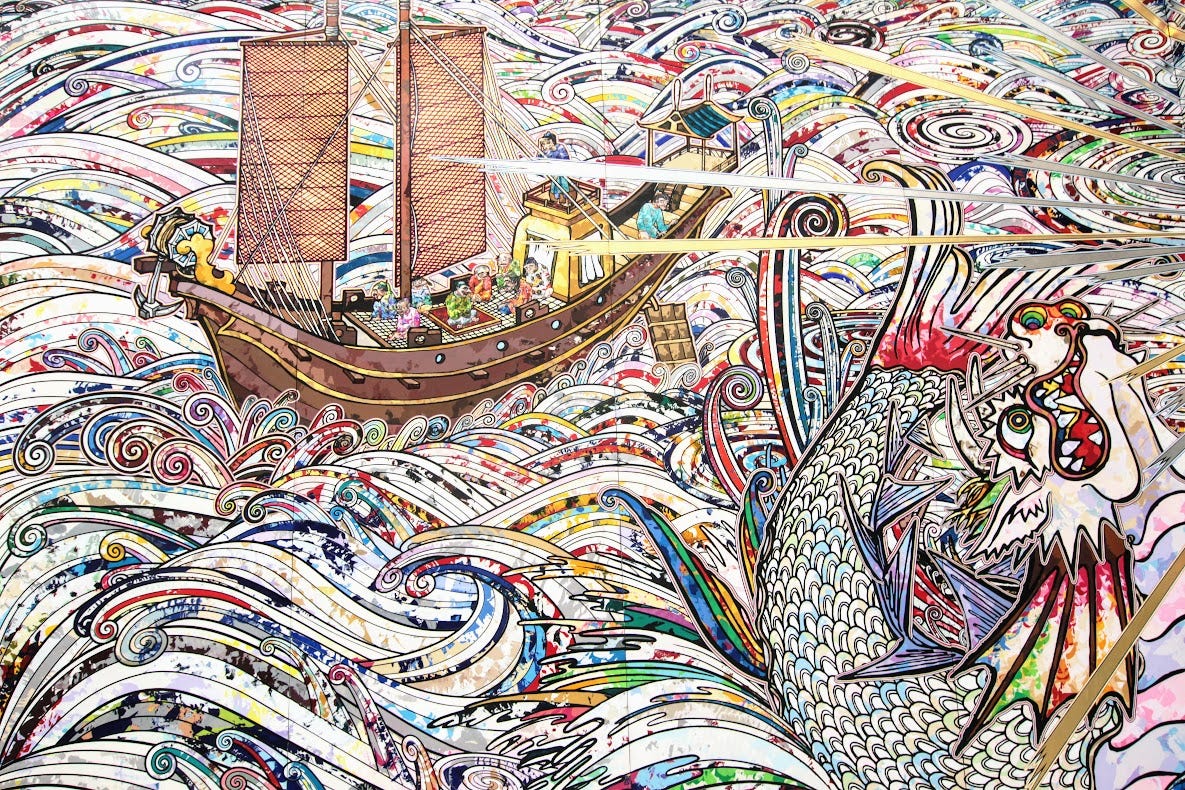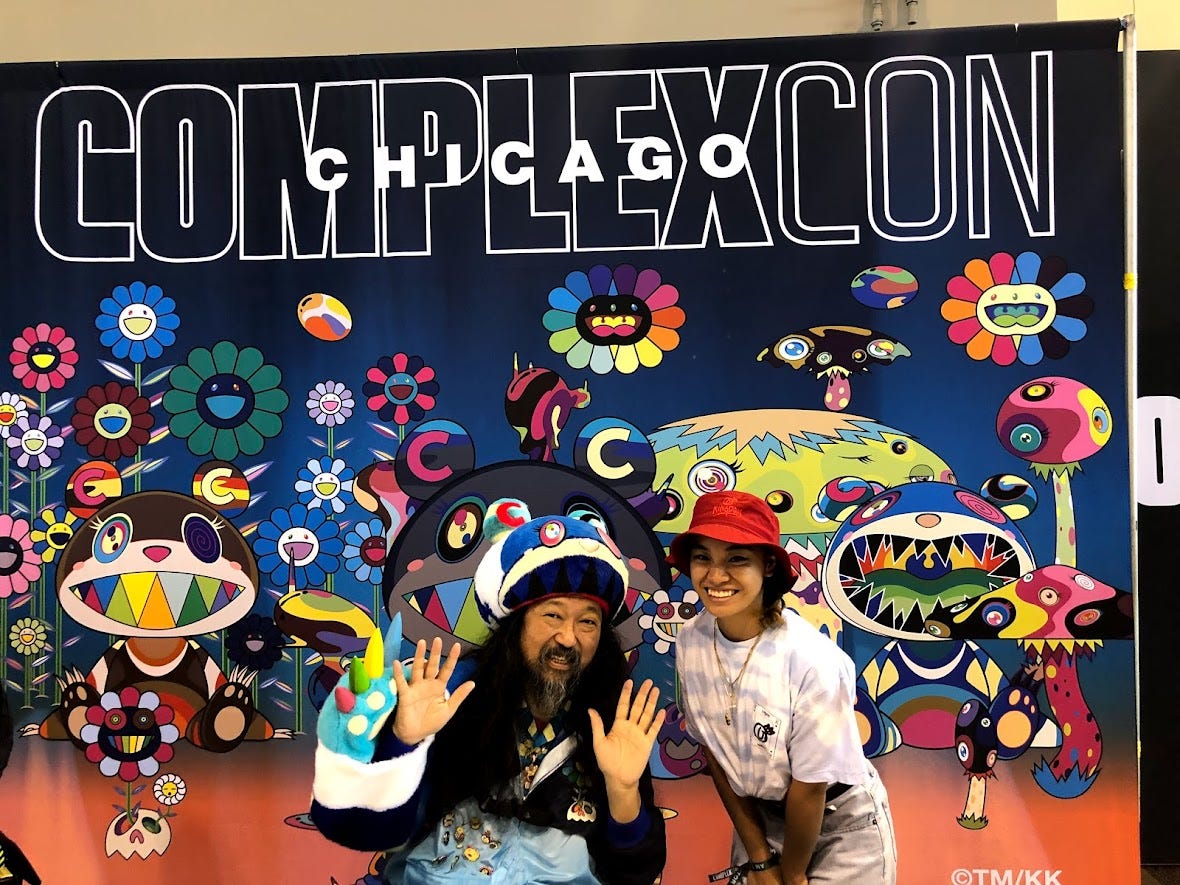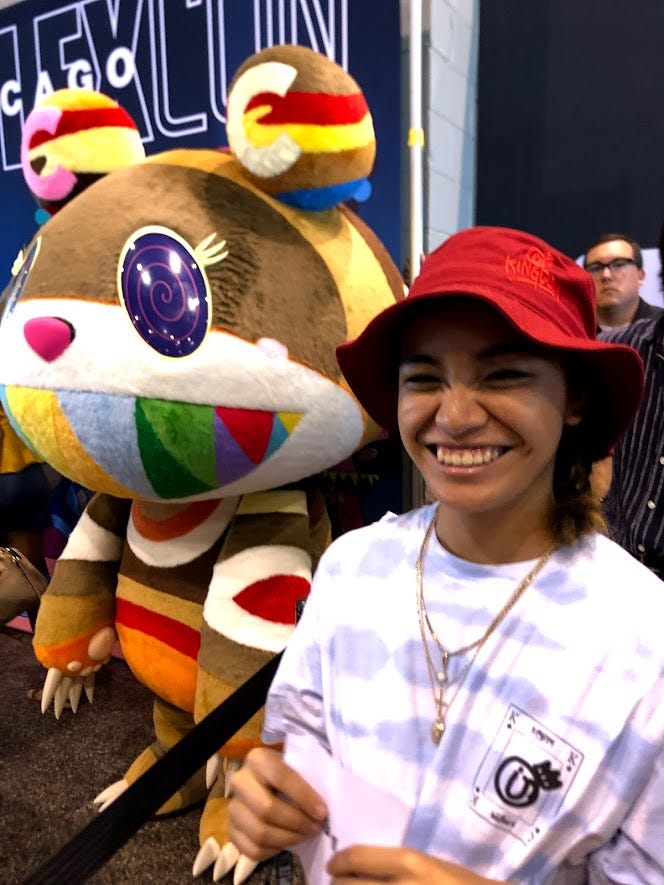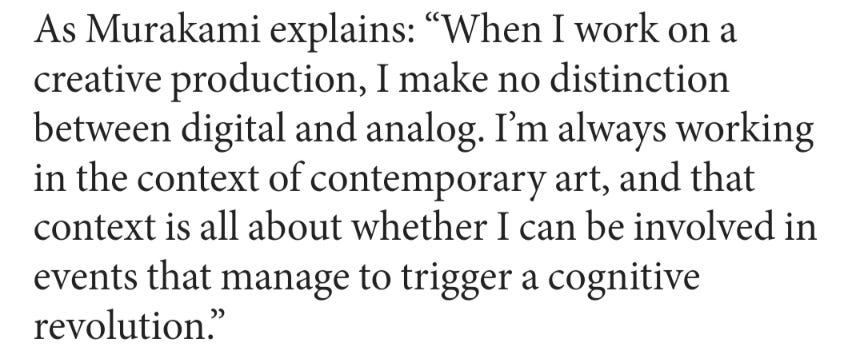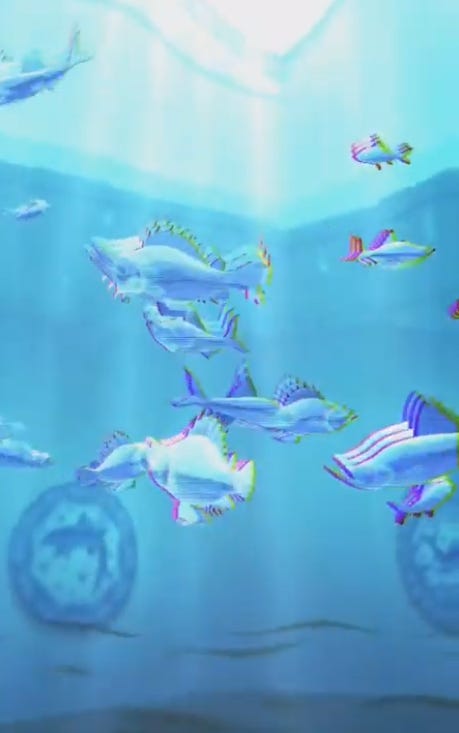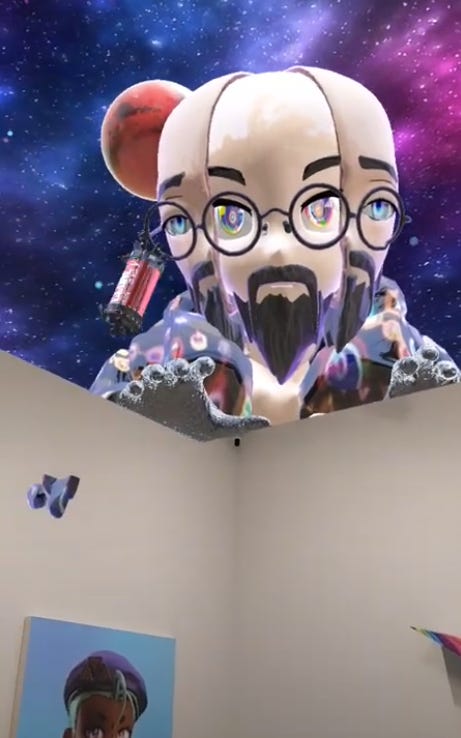Today, I want to share a little about one of my favorite artists: Takashi Murakami.
My first time experiencing his work was in 2017 at The Broad in Los Angeles.
Pictured: In the Land of the Dead, Stepping on the Tail of a Rainbow which is an 82-foot-long acrylic painting mural that fuses traditional 18th century techniques with Murakami’s cartoonish, colorful POV. Photos taken by me in 2017.
I remember the first time I walked up this one mural, I couldn’t move. Was it sensory overload? Perhaps. But something clicked as I paced up and down to imprint every little detail into my brain, taking in every curve and color with my eyes. It was like I had just witnessed my mind in physical form - a tangible expression of both darkness and light that exists within my soul.
In simpler terms, it was the piece that convinced me that in whatever shape or form, art was my calling.
In 2019, I met him (and his famous bears) at ComplexCon Chicago. My caption was “I met Murakami, I’m never gonna fail.”
Well, reader. I have failed many times before and since then. But what I really meant was that I could never fail at being an artist. Because you can’t fail unless you give up on that calling. And painful as it may be in some seasons to face constant rejection and shifting of plans, I haven’t quit. I tend to sleep on myself a lot, feel that doubt often, but I won’t quit on myself. This moment is one I return to as a reminder to keep going.
If you want to learn more about Murakami’s style and contributions to pop culture, watch these.
Murakami’s signature art style is called superflat.
Superflat art is characterized by bold outlines, flat colors, and a lack of perspective and three-dimensional depth […] According to Murakami, “flattening” not only refers to the flatness of the image but also the flattening of the divisions between high and low art as well as between art and consumer culture. In fact, many of Murakami’s Superflat works explore the consumerist culture of post-war Japan. The artist explains, “World War II was always my theme—I was always thinking about how the culture reinvented itself after the war.”
Whenever I feel burdened by the commodification of individuality - which is to say the monetary value placed on individuals to be something/be unique/contribute something original to this world - I think about the power of interpretation. What other people’s understanding of your work is, versus your own understanding of your work.
Most people recognize Murakami’s work as the smiling flowers made popular through streetwear and hype consumerism. These flowers come in the form of pillows, tee-shirt graphics, plushies, and even a pancake skillet.
But did you know the origin of this flower icon was actually to articulate feelings of post-traumatic stress?
- From Takashi Murakami Flower - What Is It?
It seems so silly that Murakami has this amazing artistic philosophy but he just keeps getting his bag from consumers that couldn’t probably care less about what he has to say. I couldn’t imagine being a whole ass genius and that talent being boiled down to something so little in comparison. But he doesn’t seem to think that way about himself at all. If anything, he’s still hungry to keep learning his own mind.
For me, of course I want people to see Murakami, or any artist really, for their whole catalog and not just some superficial products. I want people to feel what I feel, to notice the nuance and storytelling, and to eat that shit up with the same ease in which a card is swiped at every Uniqlo drop.
Lately though, I’m starting to realize that it isn’t my responsibility as the artist to make people understand. It is my job to encourage them to, sure. But not to force a meaning of my own. To seek validation in our interpretations matching. If people want to dig deeper, the right ones will.
It’s still a lesson I am learning: being patient with others to find their own way and navigate their own experiences without guidance. It’s my eldest daughter, big sibling nature to think otherwise. But as an artist I need to be confident that whatever message I instill in my own work, needs to mean what it means to me first and foremost and before anyone else. Because I won’t always be understood, liked, or more than just a thought to some. That’s not in my control. I have to always check-in with myself: Do I really want this? Is this still the love of my life? What is in my control is whether or not I feel satisfied in my own offerings and if I can finally accept myself regardless of external validation. If I truly believe in being revolutionary, what must I first understand about my own battles?
I reflect on what it was like to experience Murakami while he’s still very much alive. I don’t love parasocial relationships so I don’t feel I know celebrities just because I’ve worked in proximity to them. I want to see them as people the way I would hope they see me. May we all understand each other’s ability to change and evolve with time.
Something I didn’t mention earlier is that at ComplexCon, during the pre-con set-up day, I was sitting on the floor trying to build something out of cardboard or the like for our booth. I was talking to myself out loud, asking “is this even anything? does this even look like anything?,” running on so little sleep and the day had only just begun. I noticed a person’s shadow looming over me as I fixated, and when I turned it was an elder Asian man with a drawstring hat, fanny pack, hands behind back dad-style. He was observing me until I observed him. He smiled and nodded before he disappeared just as quietly.
We have never had a conversation, but I feel like that small exchange was a moment of resonance. As above, so below. Young artist faces the veteran artist, and in that they mirror each other. In order to build something as large as legacy, one must first experience the humbling feelings of being on your own, putting it together from whatever you have in front of you.
Here are some images from his 2022 NFT exhibition, An Arrow Through History.
I can’t fit all of my personal footage here but in summary, every room featured regular canvas/sculpture works just like a typical gallery. The difference was, there were hidden QR codes throughout each room that once scanned, gave you a new Snapchat filter designed by Murakami. He wanted you to experience each room in duality - admire the works as is, and when you were ready, immerse yourselves in them fully.
What’s a piece of art that has stuck with you all this time?




